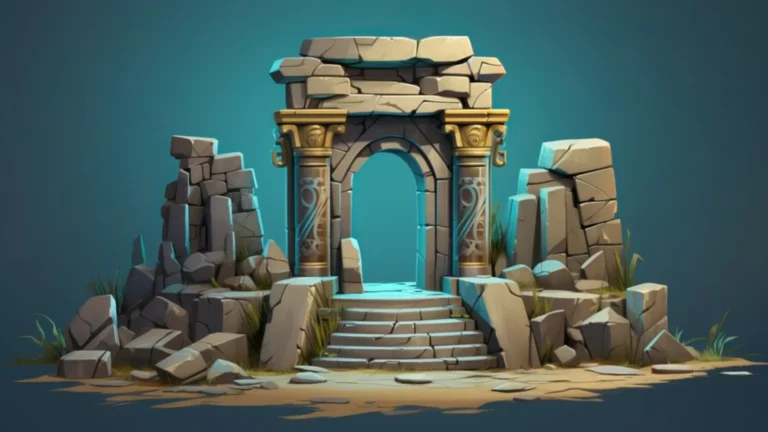The exploration of ancient arts reveals the rich tapestry of human creativity, cultural expression, and historical significance. From intricate pottery to monumental sculptures, these timeless masterpieces tell stories of civilizations long past. This article delves into the various forms of ancient art, their techniques, and the lasting impact they have had on modern artistic practices.
ALSO READ: Delicious Turrón: Traditional Spanish Nougat Recipes & Tips
The Significance Of Ancient Arts
Ancient art serves as a window into the past, providing insights into the beliefs, values, and daily lives of ancient peoples. These works often reflect the social, political, and religious contexts of their time. Understanding ancient arts allows us to appreciate the continuity of human creativity across ages and cultures.
Cultural Identity and Expression
Art is a powerful medium for expressing cultural identity. Ancient artists conveyed their societies’ myths, histories, and ideologies through visual forms. For example, the intricate motifs in ancient Egyptian art symbolized the afterlife, while the frescoes of the Minoans illustrated their vibrant culture.
Techniques Passed Through Generations
The techniques employed by ancient artisans have been passed down through generations. Many contemporary artists still draw inspiration from these methods, blending ancient techniques with modern materials and styles. This connection highlights the enduring influence of ancient arts on today’s creative landscape.
Key Forms Of Ancient Art
Sculpture
Sculpture is one of the most enduring forms of ancient art. From the colossal statues of Easter Island to the delicate figures of Greek classical art, sculptures capture the essence of their creators’ vision.
Techniques in Sculpture
Ancient sculptors employed various techniques, including:
- Carving: Stone was often carved using chisels and hammers to create detailed figures.
- Modeling: Materials like clay were shaped by hand to create lifelike forms.
- Casting: Bronze sculptures were created by pouring molten metal into molds, allowing for intricate designs.
Pottery
Pottery is another significant ancient art form that has survived through millennia. Each culture produced unique styles, often reflecting daily life, rituals, and artistic trends.
Techniques in Pottery
Ancient potters utilized several techniques, including:
- Hand-building: Coiling and pinching methods allowed artisans to shape clay by hand.
- Wheel-throwing: The potter’s wheel revolutionized pottery production, enabling more uniform shapes.
- Glazing: Techniques for applying glazes added color and durability, with variations across cultures.
Painting
Ancient painting, whether on walls or canvases, served various functions—from decorating sacred spaces to recording historical events.
Techniques in Painting
- Fresco: This technique involved applying water-based pigments to freshly laid plaster, allowing colors to become an integral part of the wall surface.
- Tempera: Pigments mixed with a binding agent, such as egg yolk, created vibrant colors on wooden panels.
Textile Arts
Textile arts, including weaving and embroidery, played a crucial role in ancient societies. Fabrics were not only functional but also served as status symbols and artistic expressions.
Techniques in Textile Arts
- Weaving: Looms allowed for complex patterns and designs, often telling stories through their motifs.
- Dyeing: Natural dyes from plants and minerals produced a rich palette of colors, enhancing the aesthetic appeal of textiles.
Notable Ancient Artworks
The Venus of Willendorf
This small statuette, dating back to around 25,000 BCE, is a prime example of prehistoric art. Its exaggerated features have sparked debate regarding its purpose—possibly representing fertility or a mother goddess.
The Parthenon Sculptures
The Parthenon in Athens features stunning sculptures that exemplify classical Greek art. The friezes depict various mythological and historical scenes, showcasing the skill and artistry of their creators.
The Terracotta Army
Discovered in 1974, the Terracotta Army consists of thousands of life-sized sculptures buried with China’s first emperor, Qin Shi Huang. Each figure is unique, illustrating the remarkable craftsmanship of ancient Chinese artisans.
The Impact Of Ancient Arts On Modern Culture
Influence on Contemporary Artists
Many contemporary artists draw inspiration from ancient techniques, materials, and themes. This blend of old and new allows for innovative expressions while honoring the past.
Preservation and Restoration
Efforts to preserve and restore ancient artworks are crucial for maintaining cultural heritage. Organizations around the world work to protect these masterpieces, ensuring that future generations can appreciate their beauty and significance.
The Role Of Ancient Art In Education
Teaching History Through Art
Ancient art serves as an effective educational tool, allowing students to engage with history in a tangible way. By studying artworks, learners can better understand the cultural and historical contexts of different civilizations.
Fostering Creativity
Exploring ancient art can inspire creativity in students and artists alike. The techniques and themes found in these works encourage experimentation and innovation in contemporary art practices.
Conclusion
Exploring ancient arts unveils a world of creativity, cultural significance, and historical context. The techniques and masterpieces from these civilizations continue to inspire and influence contemporary artists, ensuring that the legacy of ancient art endures. By appreciating and preserving these timeless works, we connect with our shared human experience, fostering a deeper understanding of the past and its relevance to the present.
ALSO READ: Unlocking The Secrets Of Stars: Your Guide To Stellar Wonders
FAQs
What is ancient art?
Ancient art refers to the visual arts created by ancient civilizations, encompassing various forms such as sculpture, pottery, painting, and textiles. It reflects the cultural, social, and historical contexts of its time.
How did ancient techniques influence modern art?
Many modern artists incorporate ancient techniques into their work, blending traditional methods with contemporary styles. This connection allows for the preservation of artistic heritage while fostering innovation.
What materials were commonly used in ancient art?
Ancient artists used a variety of materials, including stone, clay, bronze, wood, and natural dyes. The choice of materials often depended on cultural practices and available resources.
Why is preserving ancient art important?
Preserving ancient art is essential for maintaining cultural heritage. These artworks provide valuable insights into past civilizations, contributing to our understanding of history, culture, and human creativity.
How can one learn about ancient art?
Learning about ancient art can be done through various avenues, including visiting museums, attending lectures, taking art history courses, and reading books focused on specific cultures or art forms.

